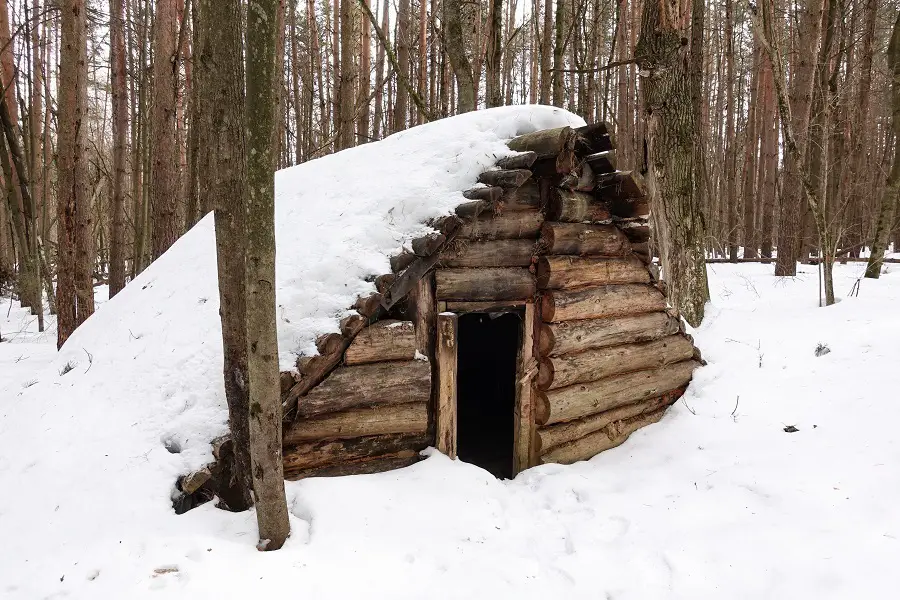Last updated on
Whether you are looking to bushcraft in the wilderness, or get caught out in the wild during a storm or other emergency, knowing how to survive is very important. One of the first things to think about is shelter.
You should make sure to have some gear with you too (learn more about the various types of survival gear you should have at Bugoutbill.com), but shelter is what is most crucial to think about to ensure your survival.
Shelter helps keep you protected from the elements, and keeps you warm and comfortable. Without it, you may find yourself in a lot of trouble. Thankfully, there are many types of shelter you can make quickly and easily with only a few tools and materials needed.
Without further ado, let’s go over a few simple survival shelters, and how you can make them.
What's Inside
A-Frame Tarp Shelter

This is a great little type of shelter that is very quick to make, and only requires some cordage, a tarp, and a couple of trees.
You begin by tying a line of cord between two trees. Next, you simply need to lay your tarp down over the line and then tie down the corners of the tarp as best as possible.
You can suspend this shelter close to the ground for optimal wind and rain protection, but can also be done up a little higher if you prefer more space or better airflow.
The choice is yours, and it makes a great and quick shelter either way. In fact, from start to finish this shelter should take you little more than 10 minutes.
Of course, make sure to know the ways to stay warm if it’s cold, as this shelter doesn’t provide much in terms of warmth, and make sure to find something comfortable to use as a bed.
Lean-To
One of the most popular and easy types of shelters to build is the lean-to. It can be set up with a variety of materials and is generally used to protect individuals from the wind, rain, or whatever else might be thrown at you.
All you need to do is support a long pole between two trees and then cover one side with branches, poles, or anything else you can find.
Then add some leaves or other vegetation on top. This will leave you with a one-sided structure that does a great job at stopping the wind and even some rain.
However, there are some downsides to a shelter like this. It doesn’t offer much in terms of holding heat, and if the rain or wind switches directions, the shelter won’t be effective anymore.
But for how easy it is to put together and how well it works in the right conditions, it is certainly worthy of being mentioned here.
Covered Hammock
If you need to be suspended off the ground due to wet conditions, snow, or a bug infestation, a hammock might be your only option.
While a standard hammock is fine if the weather is clear, during an emergency rainstorm or snowfall, you likely want the hammock to be covered.
All you need here are a few trees to tie the hammock to, some cordage, and the hammock/tarp itself. This will keep you off the ground, and often provide a more comfortable experience.
To cover the hammock, you can essentially create the A-frame tarp shelter we mentioned earlier and simply put it higher up the tree so it will act like a roof.
There are many useful knots to know, and using these can help ensure your hammock is supported and sturdy. There is nothing worse than being rudely awoken in the middle of the night when your hammock fell after not being secured properly.
In conclusion, we hope that this blog post has been able to help you learn a little more about some of the best and easiest survival shelters to make.




